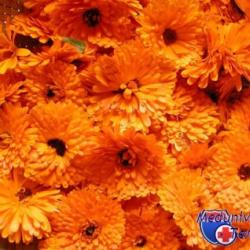How to distinguish natural leather from artificial leather? Set the skin on fire
Today, manufacturers have learned to imitate leather so much that it is almost impossible to distinguish it from natural one. What to do if you want to buy a leather product, and how not to fall for the tricks of sellers? You will learn about the distinctive features of genuine leather from the article.
Signs of genuine leather
To quickly distinguish whether it is leather or a substitute, pay attention to the following points.
Cover pattern
A natural specimen has a unique pattern, and on leatherette you can see the same pattern throughout the entire fabric of the product. But do not confuse artificial material with printed leather, where the pattern is also repeated. In addition, real leather has a porous structure. If you look at the surface of the material through a magnifying glass, you can see pores that are arranged in a chaotic manner.
Thermal properties
An artificial specimen does not have the properties of accumulating and transferring heat, unlike natural leather, which quickly heats up even from the hands and maintains its temperature. The leatherette will, of course, heat up in your hands, but moisture will appear on the surface, while the surface of the skin will be dry. The difference is obvious if you hold both copies in your hands.
Wrong side or cut point
It is not always possible to see the back of a product to determine whether it is a fake or a natural material. But the structure is clearly visible if you find and study the place of the cut. Real leather consists of suede fibers, while leatherette is made from synthetic or natural fabric. Now a modern material has appeared on the market - eco-leather, which is difficult to distinguish from natural leather by external features. Its artificial origin is revealed by its fabric base.
Product weight
Faux leather is much lighter than natural leather. This fact can be felt even on small products. And if you choose a leather jacket, then you will certainly feel the difference when you weigh the items of clothing in your hands. Please note that the weight of genuine leather may also vary depending on its type. For example, a product made from sheep leather will be lighter than one made from bovine leather. But the substitute always has less weight, which is why it differs from any natural material.
Smell
Leatherette items have a pungent chemical odor, which can be very difficult to remove. Surely, many have noticed this circumstance in the example of new shoes made from substitutes. High-quality leather material has a subtle aroma. Sometimes manufacturers use fragrances that imitate the aroma of natural leather, thereby misleading buyers. But this is possible if the artificial substitute is of excellent quality, because the aroma of a cheap fake cannot be masked by anything.

Ability to absorb moisture
You can check the product upon purchase by the reaction of the material to moisture. If you succeed, then conduct such an experiment to distinguish natural material from artificial one. If a little water gets on natural leather, it will be immediately absorbed, leaving a dark mark on the surface. It will gradually disappear as the moisture evaporates. Leather substitute does not have such absorbent features. The water will remain on the surface, and the material will not change its color.
Tactile properties
The structure of natural material is always a little rough. The leather substitute is smooth to the touch. When folded, the leather will change color slightly in the fold area. But if you return it to its original state, you will not see any creases at the bend. The leather substitute will not change color, but visible marks may be visible on the folded area.
Product cost
Real high-quality leather cannot have a low cost. But the price factor depends on the skin type. The most budget option is products made from bovine, pig or cow leather. This variety is often used to make shoes, belts or jackets. It is quite dense and tough. Goat, calf or sheep leather has softer properties. And the most expensive material with a high cost is crocodile, ostrich, deer or snake skin.
How to quickly check leather for authenticity
Before you make a purchase, make sure that it is not a fake. To do this, use the following tricks:
- Press the material, genuine leather is elastic and soft to the touch. After pressing, it should quickly return to its original state without causing dents.
- Stretch the product a little; you should not feel the “rubber” effect in your hands. But genuine leather quickly returns to its original state.
- Carefully inspect the cut site. Natural material is thicker than artificial. If you notice intertwined fibers, then rest assured that this is leather. The fabric base indicates a fake.
- Place your palm on the surface of the material for a few seconds. Genuine leather will quickly heat up and absorb moisture. The artificial leather will leave a cooling sensation in the palm of your hand. The substitute does not accept moisture.
- A quality product is confirmed by a small sample of the material. Usually, for genuine leather, a figured pattern is cut out. For artificial fakes, a piece of leatherette can be in the form of a regular diamond. The edge of the cut should have a raw appearance, while the substitute has a smooth cut in appearance.
Inga Mayakovskaya
Reading time: 6 minutes
A A
Today it is difficult not to get confused in the leather goods market. In addition to the usual artificial leather, sellers offer products made from pressed leather, assuring that this is also genuine leather. Is this so, and how to distinguish natural leather from artificial leather, you will find out in this article.
What is pressed leather and how does it differ from genuine leather?
Let’s immediately make a reservation that pressed leather, in fact, does not exist. This is the same leatherette
. Only during production is part of the leather waste - trimmings, shavings or leather dust - mixed into its synthetic composition. Then everything is crushed, mixed, heated and pressed. When heated, synthetic fibers melt, gluing the material. The result is a fairly cheap material with low air and moisture permeability
. Yes, this material is suitable for the production of bags, wallets or belts, but shoes are made from it rigid and inelastic
, harm to the foot. The main problem with pressed leather is its fragility; such products are short-lived: belts and fasteners after a short period of use crack at the folds
.
Signs of natural leather in products - how to distinguish natural leather from artificial leather?
Unique properties of genuine leather impossible to convey in synthetic materials
. Elasticity, breathability, density, thermal conductivity, water absorption - these are the most useful properties of leather. Of course, real leather is different high demand and price
. Therefore, unfortunately, there are many ways to imitate genuine leather. To distinguish artificial leather from natural leather, we must know the main features. 
So, what should you look for to distinguish real leather from artificial leather?

Many people are mistaken when they say that real leather needs to be set on fire and it will not catch fire. It is necessary to take into account the fact that the skin is treated aniline coating , which can burn when heated. There are also cases when they stick to the skin drawing or print . Of course, in this case, some properties for testing change, but still this is genuine leather, and according to the main features described above, it can be distinguished from artificial .
There can never be too many accessories - every woman knows this. Maybe that’s why every self-respecting fashionista has several pairs of shoes, handbags, belts and gloves hidden in her wardrobe. And although the materials for their manufacture are very diverse, genuine leather is undoubtedly the leader. However, manufacturers have learned to make artificial leather in such a way that it is sometimes very difficult to distinguish it from natural leather. This is understandable, because it is cheaper to produce goods from leatherette, and they wear out faster, which means the consumer will buy more and more.
When choosing a leather product in a store, you will have to use some of your senses.
- Smell. Genuine leather has a peculiar smell, while artificial leather has an unpleasant, pungent odor. By the way, you should not inhale such a smell for a long time, it is harmful. Unfortunately, modern technologies make it possible to add synthetic fragrances and fake the smell of natural leather.
- Touch. Place your palm on your skin. The natural one will heat up in a few seconds, but the artificial one will cool the hand, and after removing the palm there will be a slight fog on it.
- Vision. It is very difficult to distinguish natural leather from artificial leather by texture. But you can pay attention to other distinctive features.
- Front side. When choosing shoes, bend them slightly towards the heel or press your toe with your toe. Wrinkles will appear immediately, but after straightening on natural leather, the fold will not be visible.
- Wrong side. Genuine leather has fibers on the reverse side. In addition, it looks thicker than artificial one.
- The edges. Pay attention to the edges of the product. The edge of a product made from genuine leather is dense, uniform, and cannot be delaminate. The artificial leather has many small holes, as if it had been pierced with needles often, often; it can be easily peeled off. In addition, such a product may have threads sticking out from the textile backing.
- Package. Manufacturers who do not skimp on packaging will most likely have prepared goods made from genuine leather for you.
- Front side. When choosing shoes, bend them slightly towards the heel or press your toe with your toe. Wrinkles will appear immediately, but after straightening on natural leather, the fold will not be visible.
- If possible, dab some water on your skin. Nothing will happen to artificial leather, but natural leather will darken.
- A radical way is to pierce the skin with a needle in an inconspicuous place. It will be difficult to pierce a natural one, but an easy one to pierce an artificial one.
- Another radical method is combustion. If you bring a burning match or lighter to artificial leather, a scorched area will remain, but natural leather will survive a similar experiment with virtually no visible changes.

If there is no sample, then there should at least be a sign indicating what material was used in production. This emblem is located on the inside of the product and looks like the outline of the animal whose skin was used to make the product, or a diamond if the product is made of leatherette.

To be sure of purchasing truly genuine leather, you need to purchase products in trusted places - in stores. Well-known manufacturing companies will also not risk their reputation, so it is worth paying attention to their products. In addition, conscientious manufacturers indicate on the box information about all materials used.
Determining the quality of leather. The fastest and easiest ways!
We live in such a time that, unfortunately, we often have to doubt the quality of certain things. And leather is no exception. The market is overflowing with leather clothing, and it is completely unclear how to sort through this variety. Therefore, in order not to buy a pig in a poke and not to overpay for dubious quality, right now we will learn how to determine what exactly is in front of you: leather or leatherette? High-quality, well-made leather or a dubious home-made product?
Make yourself comfortable, it will be interesting!
Determining the type of leather: artificial or natural? 4 ways!
Tactile way
The easiest way to determine whether the leather in front of you is genuine or artificial is to touch it. Natural leather will quickly become warm while remaining dry. Leatherette, on the contrary, will heat up only after some time and even become a little damp from your hands.
Experimental method
For this method we need water. Place a couple of drops on your skin, somewhere on the inside of your jacket. Genuine leather will absorb water and darken slightly. Artificial water will not absorb water, and a droplet will simply roll off its surface.
However, this method does not provide a 100% guarantee of results, because modern products are treated with water-repellent impregnations.
Visual method
For this method, our main tool is the eyes. Take a close look at your skin. Garments made from genuine leather will have slightly rough edges and will not be finished. If the edges are processed and rolled up, then this means that you have artificial leather.
In general, sections can tell a lot. This is, so to speak, the calling card of the material. Faux leather cuts are usually smooth and feel like plastic or foam. And artificial leather is based on fabric, knitwear or non-woven material. In genuine leather, when cut, you can see fibers intertwined with each other. But on jackets in stores there is usually no way to show off the cut.
If possible, be sure to look at the inner surface of the leather - the underside. In professional language, the underside of the skin is called the terrible word “mezdra”. In genuine leather, the inner layer is similar to suede, corduroy, velor or velvet.
Now look at the texture of the skin - its natural pattern. In genuine leather it is not repeated; in leatherette it is the same over the entire surface. The same goes for skin pores. On natural leather they are located randomly, on artificial leather they have the same depth and shape.
High-quality leather feels delicate, thin and soft to the touch. Squeeze the skin in your palm and release sharply. What do you see? High-quality leather will not wrinkle much and immediately, before your eyes, will begin to straighten out.
Olfactory method
This is an incredibly simple, but at the same time the most unreliable way to determine whether the leather in front of you is genuine or artificial. Just smell it. Faux leather usually has a strong chemical smell. But technological progress has come so far that artificial leather can be given the smell of natural leather with the help of special flavoring agents. So it’s better not to trust your nose in this matter.
We determine the quality of leather dressing and dyeing
We have figured out how to quickly distinguish natural material from artificial material, now we will learn to understand the quality of leather dressing and dyeing.
To determine the quality of leather for jackets, we need a small piece of white, damp cloth. Rub it onto the surface of your skin. If the fabric is not dyed, then the dyeing quality is good. But there is bad news - high-quality painted leather is a rarity today. Therefore, after purchasing a jacket, do not forget to treat it with water and dirt repellent agents. In addition to their main function, they will help preserve the original color of your clothes and ensure that if you put on a brown leather jacket in winter, you won’t meet spring wearing a yellow one.
Now look closely at the seams. In a quality product, all stitches should be even. This is pleasing to the eye and speaks of factory rather than basement production.
That's how easy it is to determine the quality of leather on leather jackets!
Now you are a professional!
Armed with this simple knowledge, you can easily determine whether this is really a leather trigger or a skillfully made fake. For example, the now popular eco-leather looks very similar to genuine leather. But this is only a superficial resemblance. It is unlikely that artificial leather will have the same high quality characteristics as natural leather. It will not “breathe” because it does not have pores and will not boast the same durability.
Don't let yourself be deceived. Choose only high-quality material and do not overpay for fakes.
Happy shopping!
Not everyone knows how to distinguish natural leather from artificial leather. But this knowledge is necessary, since without understanding the product, you will purchase a low-quality item from a cheap substitute that will not last you long.
Unscrupulous sellers very often try to pass off bad and short-lived dermantin as a real product. Only high-quality products, be it shoes or outerwear, made from natural material, will provide you with maximum comfort.
Sometimes even an experienced seller has difficulty understanding the difference between natural and artificial shoes. So, let's try to figure out how to distinguish one material from another, which is better, and also tell you about the main types of leather and its value.
Main characteristics of genuine leather
- Heat transfer. From the touch of your hands, it immediately becomes warm, and also remains dry. The leatherette heats up only after a few minutes, and in addition it becomes slightly damp.
- Thickness and edge. Pay attention to the thickness and edges of the material. Natural, as a rule, is thicker than the substitute, it has a rougher edge. The leather substitute has straight and smooth edges.
- If you bend the product made of real material or press on it, then small wrinkles will form on it at the point of deformation, but they will immediately disappear after straightening the skin.
- Color The product remains unchanged after bending or pressing, unlike an artificial one.
- Smell. Another important property of natural leather is that it does not smell of any chemicals. Faux leather has a strong, unpleasant odor. But, unfortunately, today's manufacturers apply chemical flavors to products made from substitutes, which imitate the smell of natural products.
- By shape and depth they have different pores, which are arranged in a chaotic manner.
- Product cut made of natural material contains many intertwined fibers. On the cut of leatherette they are absent; instead, you can see a fabric base.
- It absorbs moisture perfectly.
TIP: you can set a piece of leather on fire - real leather will not melt, but fake leather will instantly melt.

Recognized by the label
The inscriptions on the labels will also help you determine whether the product in your hands is made of real leather or not. Reputable manufacturers put a piece of material in the box with their finished product, by which you can find out its composition.
Remember, the attached label is in the shape of a diamond - this means that the product is made of fake leather, and if it is figured, then it is made of real leather.
In addition, the English inscription “genuine leather” (or in other languages) indicates the naturalness of the material.

Don't forget to check the attached shortcut
Types of real leather
It is distinguished by the type of animal:
- from pigs- considered the cheapest, it is used for the production of inexpensive shoes and jackets;
- of bulls- quite thick and very tough. As a rule, backpacks, jackets, bags, belts and boots are made from it;
- from cows- also relatively tough. Budget shoes are made from it;
- veal a little softer, also very durable. Used for the production of jackets, bags and shoes;
- sheep- differs in durability and softness. Gloves, belts, bags, and jackets of a higher level are made from it;
- from goats- soft and dense to the touch. It is used to make expensive gloves, wallets, purses and accessories;
- from deer- quite pleasant to the touch and soft, products made from it are exclusive;
- from crocodiles the leather is very durable. It is used for sewing jackets, shoes and bags;
- made of snakes- distinguished by its original appearance. Shoes and various accessories are also made from it;
- from ostriches- differs in elasticity and softness. This leather is used in the production of premium jackets, raincoats, and accessories.

Premium accessories are made from sheep leather
By dyeing and processing methods
- Nappa- This is the leather of bulls and cows, processed in a special way. Its main properties: durability, plasticity, even color, softness and low cost. Basically, outerwear is made from it.
- Morocco leather is made from goat skins, which is tanned (a method using chemicals and tannins).
- Velor- obtained as a result of chrome tanning; velvet finish.
- Suede- it is made from the skins of medium-sized animals; it is soft and has poor water absorption.
- Shagreen- obtained by vegetable tanning from sheep or goat skins, characterized by a relief pattern.
- Laika- leather from dog, sheep, goat skins; It is soft and is used mainly to make gloves, as it is very thin.
- Nubuck- calf or cow leather with fine pile. It resembles suede and feels just as velvety to the touch.
- Varnish— it is treated on top with a special varnish coating. Products made from this material do not tolerate moisture, as well as temperatures below −10 degrees Celsius.

Faux leather is a material made from polymer multicomponent compounds that is used instead of real leather. The substitute is used to produce various wardrobe items, as well as technical products and haberdashery. Leatherette is made by applying a special polyurethane coating to a fabric base.
Wall of flowers in the apartment. 10 original ideas
12 ways to tie your shoelaces






